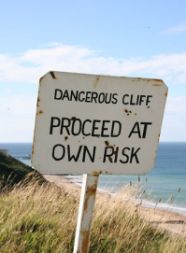Today, a guest post by Anne Roberts. Anne Roberts is a freelance writer. She writes blog posts, how-to articles, SEO copies, and many other types of content for several websites. Anne is currently a web content writer for personal injury attorneys. (But we like her anyway!!)
Explaining Negligence in the Construction Industry
The construction world can be regarded as one of the most dangerous industries to work in. Because of the inherent hazards that come with working on a construction or repair project, both construction professionals and laborers uphold certain standards to ensure a safe working environment.
Contractors, surveyors, engineers, project managers to employers–all have a duty of care to observe. They make sure that assessments of risks involved in any facet of construction are made. Laborers, on the other hand, benefit from the assessments by exercising preventive measures.
Still, accidents happen.
Some of the most common accidents that occur in construction sites involve six-feet-or-more falls from ladders or stairs. Other accidents are caused by the failure to implement safety precautions, such as improper building of scaffolding, use of dangerous tools and unsafe machinery, and other hazardous issues. Without proper implementation of safety precautions, working on an elevated surface may result to debilitating injuries and even death.
According to the Bureau of Labor Statistics (BLS), it has been estimated that fatal accidents involving construction workers accounted for 15 percent of all job-related deaths in the U.S. Such injuries or deaths may not have happened if a certain construction or repair project employed safety rules or standards of care. Such occurrence is categorized as construction negligence.
Determining Liability
When a serious accident happens, usually all parties involved are brought into the litigation, as cross-allegations of construction safety issues, construction defects, and construction administration/observation/inspection issues. In North Carolina, an employee cannot sue his employer for a workplace accident (but instead seek a workers’ compensation recovery). The employee can, however, bring a negligence action against any/all (other) responsible third parties. [Editor’s Note: The parties may have rights to recover against each other if one is actively negligent and one is only passively negligent. Otherwise, joint & several liability applies.]
To establish negligence, the injured party must prove the following four factors:
- The construction professionals involved have a duty of care;
- They breached or violated that duty of care;
- The breach of duty of care resulted to an injury; and
- The injury was the result of the construction professionals’ negligence.
[Editor’s Note: The injured party also must not have been contributorily negligent.]
Other than in a construction or repair project site, construction negligence also happens on highway construction and post-construction efforts. Unsafe conditions during roadwork can be considered negligence, especially if workers, as well as motorists, consequently sustained certain injuries.
Even a complete building can be a source of negligence, in which the contractor or subcontractor failed to adhere to building codes. Construction defects, such as low structural integrity of the building, mechanical and electrical failure, and low-quality finishes, may lead to injuries and deaths.
Melissa again: Thanks Anne for your post! Readers: Watch this space– I’m planning on posting an infographic tomorrow that will show construction accidents & related statistics. Stay tuned. In the meantime, please leave any questions or thoughts in the comment section, below.
Photo of workers on bamboo scaffolding (c) Terrance TS Tam.




